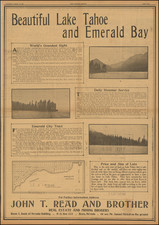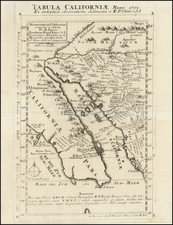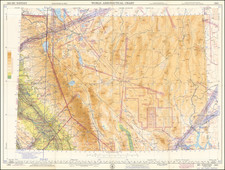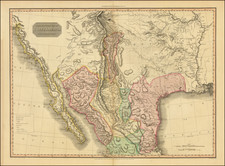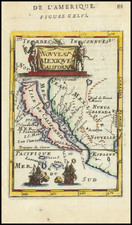One of the rarest and most important maps of San Francisco. The map is the official report showing the lands confirmed to the City of San Francisco and shows Part of Rancho San Miguel, Rancho Rincon de las Salinas Portrero Viejo, the Presidio Military Reservation, Charte Line of 1850, Point San Jose Military Reservation and a number of early roads, etc. In the Description of Lands included within the Exterior Boundaries of the Pueblo of San Francisco, there is a key showing 15 Grants, the Presidio, Point San Jose Military Reservation, Two Lots in the City (confirmed to Jacob P. Leese et al May 29, 1857), Part of Rancho Rinco (confirmed to Jose Cornelio Bernal August 4th 1857), Part of Rancho Miguel (Jose de Jesus Noe December 4th 1856), Ojo de Agua Figueroa (Juana Briones Miranda et al. January 14th 1876), 2 tracts of land at Mission Dolores (Joseph C. Allemany, Archbishop April 4th 1857), Tract of Land at Mission Dolores (C.S. de Bernal et al, July 27th 1863), Lot in Mission Dolores (Francisco de Haro August 3rd 1863), Suerte en Dolores (heirs of Francisco Guerrero Palomares April 16th 1861), Fifty lots in Mission Dolores (Francisco de Haro May 10, 1861), Lot in Mission Dolores (Candelario Valencia July 31st 1882), Lot in Mission Dolores (Elizabeth de Zaldo July 31st 1882), Carmaritas (Ferdinand Vassault et al June 26th 1882). Areas in acres also shown, along with the grant locations. A milestone San Francisco map. First example we have ever seen.
The Schmidt Lithography Company was based in San Francisco. Max Schmidt, a German immigrant, founded his first printing business in 1873, and he was one of the first printers to use lithography on the West Coast. His plant burned twice, in 1884 and 1886, but by the 1890s he ran a factory in San Francisco, as well as branches in Portland and Seattle.
During the 1906 earthquake and fire the company’s premises were destroyed again. Schmidt quickly acquired a nearby paper factory and production continued practically uninterrupted. Within two years of the fire, Schmidt had rebuilt on the site of his former factory at the corner of Second and Bryant Streets.
Schmidt’s company was best known for its printed labels, but they also produced other items like separately-issued prints. The company was once the largest printing company on the West Coast and today they are remembered for the clock tower that still stands at Second and Bryant Streets.









![Nouvelle Carte Du Mexique, Du Texas Et D'Une Partie Des Etats Limitrophes . . . 1840 [Proposed Railroads In Texas -- First Appearance of Arizona on a Printed Map]](https://storage.googleapis.com/raremaps/img/small/103480.jpg)
